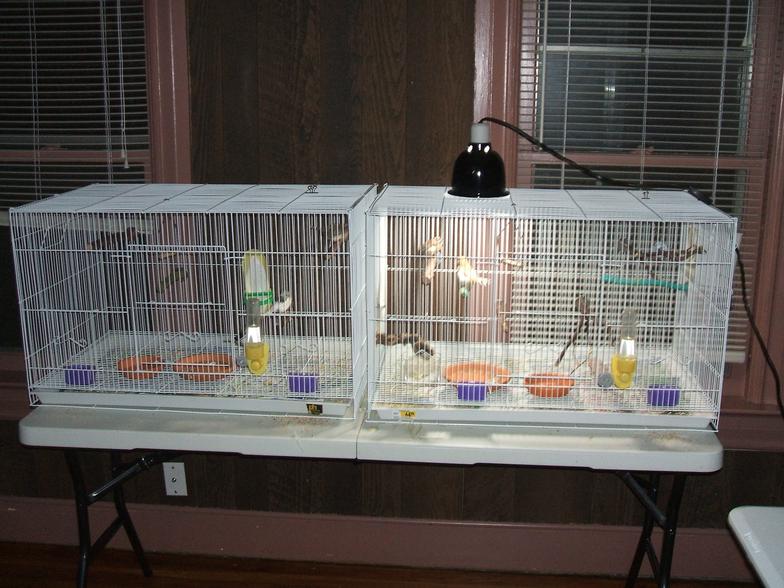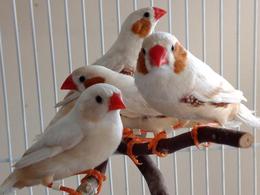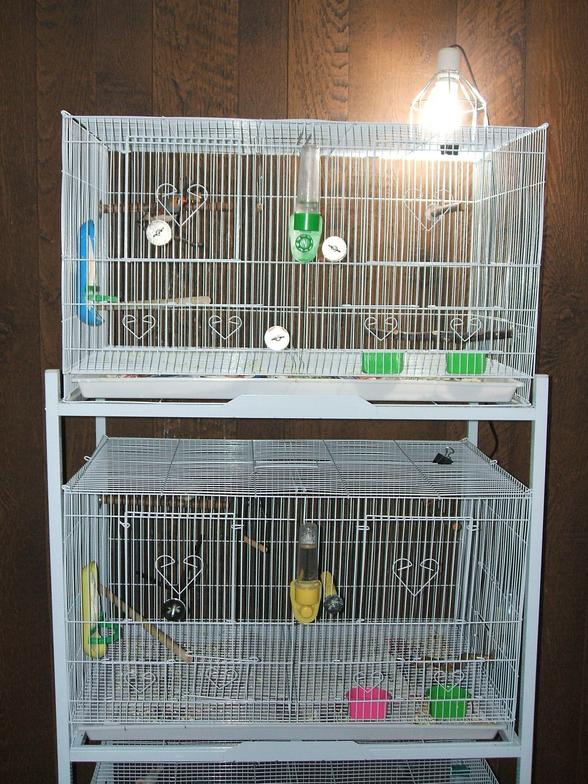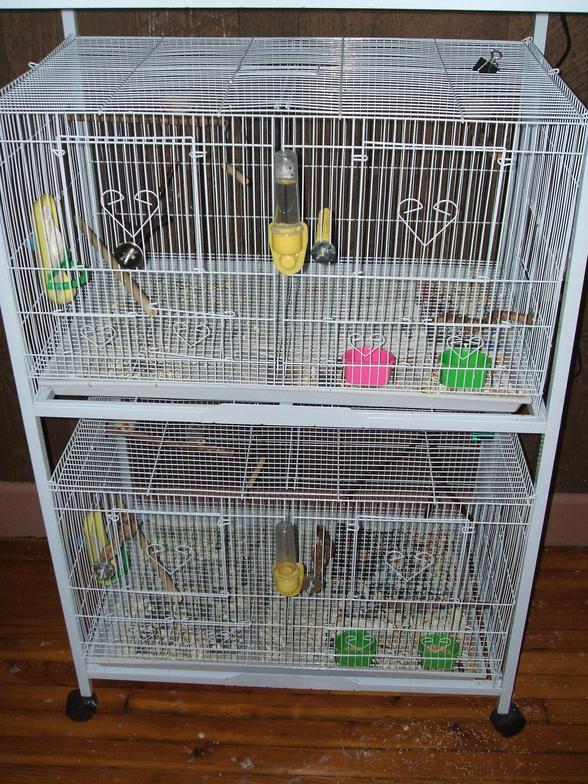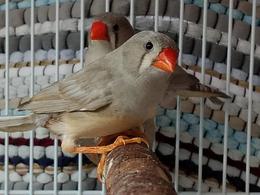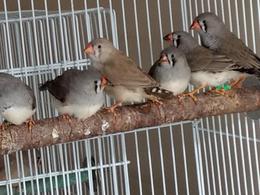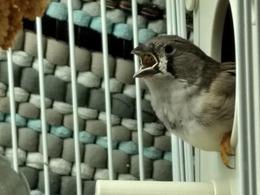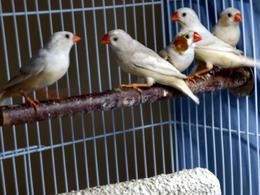Beeps 'N' Peeps
Finches
The zebra finch is a spunky little bird from Australia. They are also considered to be one of the most popular finches in aviculture. Like most other birds, they are flock animals, so they should be kept with at least one other partner. These birds are typically not comfortable being handled by humans, but they certainly liven up a room with their flying back and forth in the cage and vocalizations. Because they are so active, it is best to get the biggest cage you can afford to house them. Zebras don’t need a nest in order to sleep. In fact, adding a nest can encourage breeding behaviors, which can sometimes cause problems.
I feed all of my finches a mixture of fruits and vegetables about six days a week. They also get to feed on a dried eggfood mixture a couple of times a week, but more often when breeding. I also feed them mealworms on occasion. I try to give them mealworms more often when they are breeding. The finches are given a millet spray once every couple of weeks. They are getting more comfortable with sprouts and soaked seeds. I also make sure to change their water every single day. Sometimes I add liquid calcium or apple cider vinegar to their water.
When looking for a finch cage, it is best to buy the biggest one you can afford. The best types of cages are ones labeled as “flight cages.” A cage that is 30” X 18” X 18” will typically be okay housing a couple of finches. I expose the finches to artificial light by a full spectrum bulb. The nests that I use for breeding are the boxes that are attached to the outside of the cage. I’ve found that too many accidents can happen with the wicker nests that are sold at pet stores. A couple of things that aren’t mentioned as much as they should be are what types of perches to use. The dowel perches that come with a cage are fine to use, but they shouldn’t be the only perches in the cage. There should be different perches of various sizes. The natural perches sold in pets stores are really great. Also, the sandpaper perch covers sold in stores should never be used. They cause more harm than good.
I do a simple cage cleaning every other week, and give the cages a good scrub down once a month. To do my thorough once a month clean, I use a mixture of hot water and white vinegar. I use this mixture to not only scrub the cage, but the branches as well. The bird room is vacuumed every single day and mopped once a week. Once a month I’ll even get down and scrub the floor by hand.
When breeding my finches, I select a pair that is of safe breeding age, which is about nine months to a year. I then increase the amount of light exposure the pair has and feed them an increased amount of eggfood. After about a week, I attach the nest box to the cage and put a bit of nesting material in the box. I also put in a dish full of nesting material into the cage and allow the pair to build the nest on their own. It is recommended that a pair only has about 2-3 clutches a year, and this is the standard I go by. None of the pairs are allowed to have a clutch back to back. There is always a break in between.

